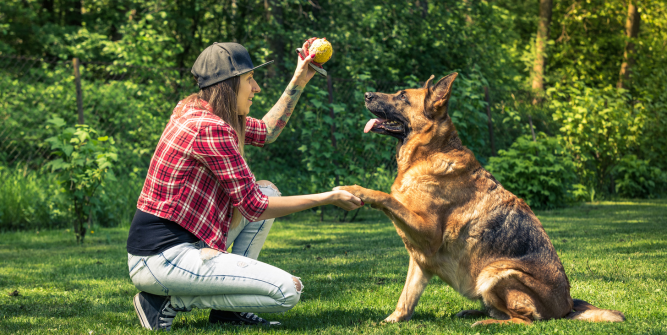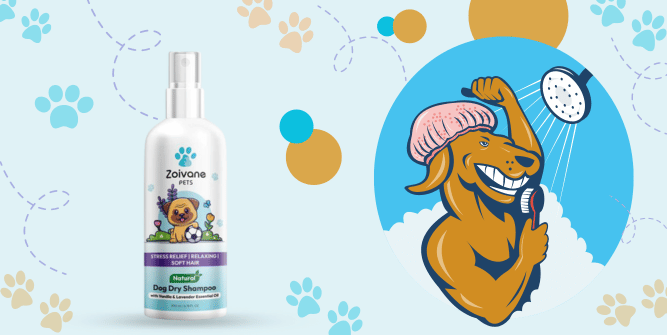
Mastering the Basics: Essential Dog Training Tips for New Owners
Introduction
Embarking on the journey of dog ownership is a joyful experience, but it also comes with responsibilities, chief among them being proper training. Whether you've just welcomed a new furry friend into your home or you're looking to refine your existing training methods, mastering the art of dog training is essential. In this guide, we'll explore seven invaluable dog training tips that will pave the way for a harmonious relationship between you and your canine companion.
Why Dog Training is Important?
Understanding why dog training is important is crucial for any pet owner, especially those exploring new dog training tips. Training not only enhances the bond between you and your canine companion but also ensures their safety and well-being. A well-trained dog is less likely to engage in destructive behaviors or exhibit aggression, making them more manageable and enjoyable to be around. Additionally, training provides mental stimulation for dogs, preventing boredom and promoting overall mental health. Furthermore, a trained dog is safer in various situations, such as off-leash walks or interactions with other animals and people. Ultimately, investing time and effort into training your dog yields countless benefits, enriching both your lives in immeasurable ways.
When to Start Dog Training?
When to start dog training is a question often pondered by new pet owners, and the answer is simple: as soon as you bring your furry friend home. Puppies are like sponges, eagerly soaking up information and experiences from their surroundings. By starting training early, ideally as soon as they enter your home, you establish a strong foundation for good behavior and obedience. Early training sessions also focus on these dog training tips like basic commands, socialization, and establishing routines, setting the stage for a well-adjusted and well-behaved companion. Starting training early not only prevents undesirable behaviors from forming but also strengthens the bond between you and your pup, laying the groundwork for a fulfilling and harmonious relationship.
How to Train Dogs at Home?
While taking care of your furry friend you may think that How to train dogs at home and training your beloved canine companion at home can be a rewarding experience, strengthening the link that exists between you and your pet. At Zoivane Pets, we understand the importance of effective pet training, which is why we've curated the perfect solution: the PET TRAINING BOX. This innovative tool provides you with all the resources and guidance you need to train your dog in the comfort of your own home.
With all these products like Potty Training Spray, Stay Away Spray, Odour Removal Spray, Small Leash, 30 minute virtual training session with our certified trainer, the PET TRAINING BOX empowers you to tackle obedience, behavior, and socialization with confidence and ease. Say goodbye to costly classes and hello to convenient, effective training right at your fingertips.
Top 7 Dog Training and Tips for Your Dog’s Health
When it comes to your dog's health, incorporating easy training tips for dogs into your routine can make a significant difference. These top 7 dog training and tips focus not only on behavior but also on fostering physical and mental well-being. Regular exercise, such as daily walks and interactive play, keeps your dog physically fit and mentally stimulated. Incorporating basic obedience commands like sit, stay, and come not only enhances their behavior but also ensures their safety in various situations. Furthermore, providing a balanced diet and maintaining regular veterinary check-ups are essential for their overall health and longevity. By integrating these easy training tips into your dog's life, you can promote a happier, healthier companion for years to come.
① Start Early:
The adage "you can't teach an old dog new tricks" holds some truth, but it's certainly not absolute. However, starting dog training early is highly beneficial. Puppies, like sponges, absorb information rapidly, making their formative months ideal for laying down the groundwork. Begin with basic commands such as sit, stay, and come, using positive reinforcement techniques like treats and praise to instill good behavior.
② Consistency is Key:
Consistency forms the cornerstone of effective dog training. Dogs thrive on routine and predictability, so it's crucial to maintain consistency in your commands, rewards, and disciplinary actions. Use the same cues for desired behaviors and ensure all family members adhere to the same rules. Confusion and a lack of consistency can impede your dog's development.
③ Positive Reinforcement:
Gone are the days of dominance-based training methods. Today, positive reinforcement reigns supreme in the world of dog training. Rewarding desired behaviors with treats, toys, or verbal praise reinforces those behaviors, making your dog more likely to repeat them. Positive reinforcement creates a bond built on trust and mutual respect, fostering a harmonious relationship between you and your furry companion.
④ Patience Pays Off:
Dog training is a journey, not a destination, and patience is your greatest ally along the way. Keep in mind that every dog learns differently and that it takes time to become proficient. Stay patient and refrain from becoming frustrated or resorting to harsh punishments. A patient approach builds confidence in your dog and strengthens your bond, leading to more effective training outcomes.
⑤ Avoid Punishment:
While it's natural to feel frustrated when your dog misbehaves, resorting to punishment is counterproductive. Punishment-based techniques can damage the trust between you and your dog, leading to fear and anxiety. Instead of punishment, focus on redirecting unwanted behaviors and reinforcing positive ones. This not only cultivates a happier, more well-adjusted dog but also fosters a stronger bond between you and your furry friend.
⑥ Keep Training Sessions Short and Sweet:
Because of their comparatively short attention spans, dogs benefit from brief but interesting training sessions. Aim for sessions lasting no more than 10-15 minutes, focusing on one or two commands at a time. Short, frequent sessions prevent your dog from becoming bored or overwhelmed, maximizing learning potential. Maintain a positive tone at the end of each training session to keep your dog excited for the next one.
⑦ Seek Professional Guidance When Needed:
While many dog owners successfully train their pets at home, sometimes professional guidance is necessary, especially for more complex behaviors or issues. Don't hesitate to seek the help of a certified dog trainer if you encounter challenges beyond your expertise. A professional trainer can provide personalized guidance and techniques tailored to your dog's unique needs, ultimately leading to more effective and efficient training outcomes.
What Not to do When Training a Dog?
When it comes to training your dog, certain pitfalls can hinder progress and even harm the bond between you and your furry friend. Here are five crucial "what not to do when training a dog" pointers to keep in mind; apart from the dog training Tips:
• Avoid Punishment-Based Methods:
Resorting to harsh punishments or physical corrections can lead to fear, anxiety, and even aggression in your dog. Punishment-based methods may suppress behavior temporarily, but they don't address the root cause and can damage the trust between you and your pet.
• Don't Use Inconsistency:
Consistency is key in dog training. Inconsistently enforcing rules or commands confuses your dog and makes it harder for them to understand what is expected of them. Ensure that everyone in the household is on the same page with training methods to avoid mixed signals.
• Avoid Skipping Basic Training:
Neglecting basic obedience training, such as sit, stay, and come, can lead to behavioral problems down the line. These foundational commands are essential for communication and safety, both at home and in public settings.
• Don't Overwhelm Your Dog:
Training sessions should be kept short and engaging, especially for young or easily distracted dogs. Avoid overwhelming your dog with too much information at once, and always end on a positive note to keep them motivated and eager to learn.
• Avoid Ignoring Mental Stimulation:
Dogs require mental stimulation in addition to exercise. Neglecting mental enrichment activities can lead to boredom and destructive behavior. Incorporate puzzle toys, interactive games, and training challenges to keep your dog's mind sharp and engaged.
By steering clear of these common mistakes, you'll set yourself and your furry friend up for success on the training journey, strengthening your bond and building a harmonious relationship based on trust and understanding.
Conclusion:-
Dog training is a rewarding endeavor that strengthens the bond between you and your canine companion while fostering good behavior and obedience. By following these seven dog training tips; starting early, maintaining consistency, utilizing positive reinforcement, exercising patience, avoiding punishment, keeping sessions short and sweet, and seeking professional guidance when needed; you'll be well-equipped to embark on a successful training journey with your furry friend. Remember, effective training takes time, dedication, and above all, love for your four-legged companion. Get started with Zoivane Pets today!
















اترك تعليقًا
This site is protected by hCaptcha and the hCaptcha Privacy Policy and Terms of Service apply.